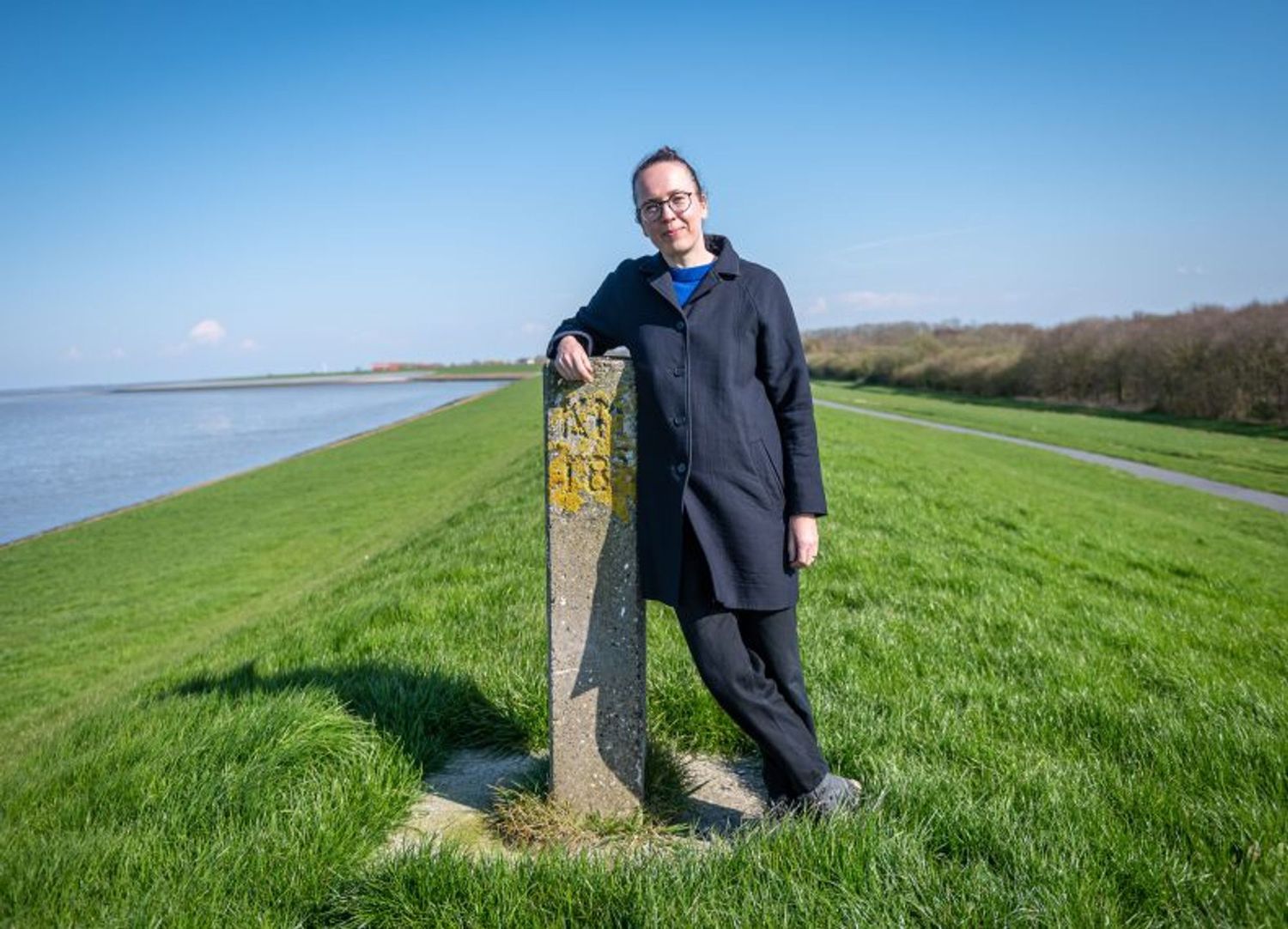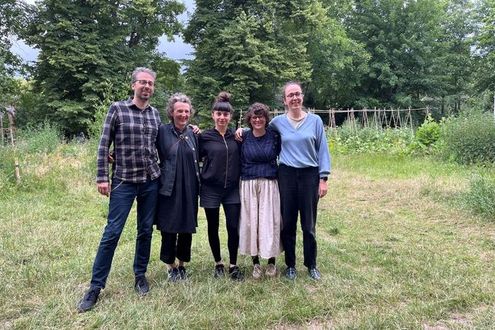What is happening in the Ems-Dollard region, and how does ecological restoration take shape here? These are the key questions artist Marjolijn Dijkman seeks to answer as part of her involvement in the WaterLANDS project. Over the next three years, she will investigate the human impact on the landscape of Ems-Dollard, ultimately creating an artwork that reflects her findings. Her project will culminate in a public exhibition in 2026.
Although Marjolijn was born in Groningen, she currently splits her time between Belgium and France. “You can call me a Dutch Belgian,” she says with a smile. Recently, she has spent more time in the Ems-Dollard area, exploring its history and natural environment. Her research delves into questions such as: What has shaped this region? How have people interacted with the sea throughout history? Marjolijn has also visited local museums to enhance her understanding of the area.
“I’m fascinated by the technology behind dike construction and the composition of silt,” she explains. “What’s in the soil? What stories does it hold?” As an artist, Marjolijn begins her process with broad exploration. “At first, I take in as much information as possible, and eventually, an idea starts to form. It could become a film, photography, sculpture, or an installation—I don’t know yet. Everything is still open. My ideal project would blend both indoor exhibitions and outdoor installations.”
Uncovering Emotions from the Past
Marjolijn has found that the history of the Ems-Dollard area still stirs strong emotions. “People are deeply connected to the region’s past, and some of the developments, like the displacement of villages for the construction of Eemshaven, continue to evoke powerful feelings,” she says. “It’s about control and the loss of control. We’re grappling with the unpredictable effects of climate change, and that discomfort is real. At the same time, we are finding solutions to manage rising sea levels. Art can play a key role in helping people process and express these complex emotions.”
Marjolijn is also intrigued by the economic dimensions of the landscape. “We’ve always tried to extract value from the land—whether through agriculture, industry, or natural resources,” she notes. “In the past, gas fueled economic progress in this area, and now people are talking about silt as the ‘grey gold.’”
Engaging with Local Communities
The Ems-Dollard is one of six action areas in the WaterLANDS project across Europe, where nature restoration efforts are underway. Community engagement is a central element of Marjolijn’s work. Over the coming months, she will engage with local residents, gathering their perspectives and stories as part of her artistic process.
One of the key ways Marjolijn will connect with the community is through a series of guided walks along the Ems-Dollard coast. These walks are named after old dikes—Waker, Sleeper, and Dreamer—and offer participants a unique view of the landscape. Each walk will feature expert guides with in-depth knowledge of the coastline, allowing residents to gain new insights into the region’s ecological and cultural history. Participation in the walks is free, and more information can be found at www.wakerslaperdromer.nl.
Through these walks and her broader project, Marjolijn aims to foster a deeper connection between the people and the landscape of Ems-Dollard, highlighting both the challenges and opportunities of ecological restoration in the face of climate change.

